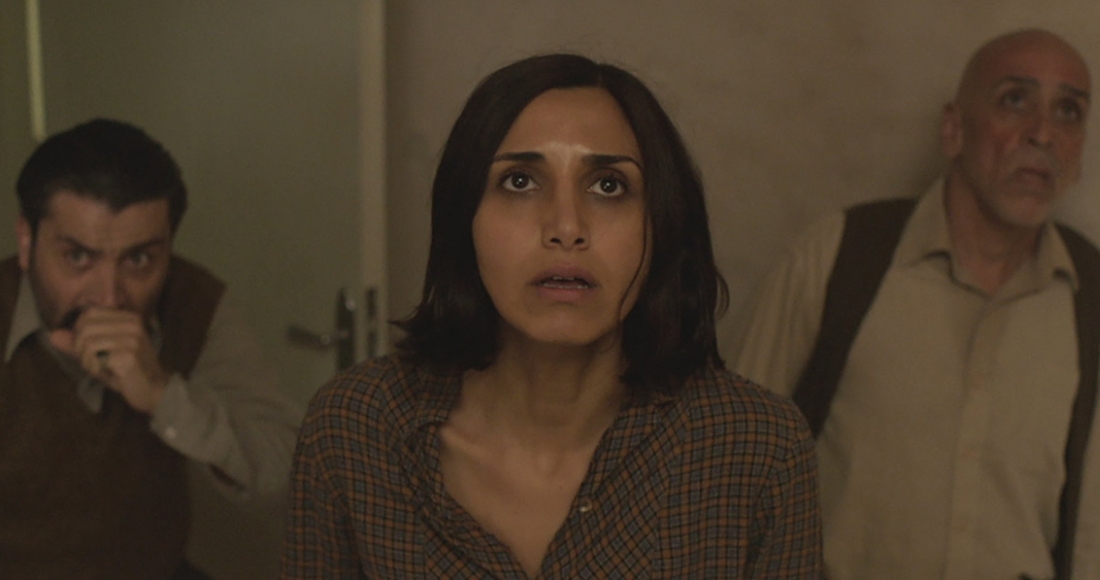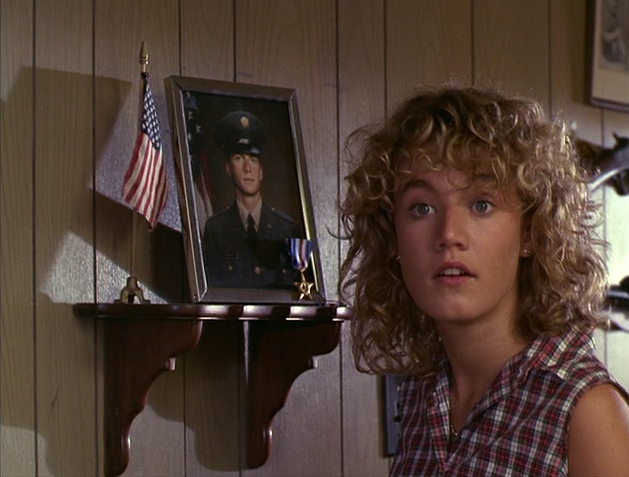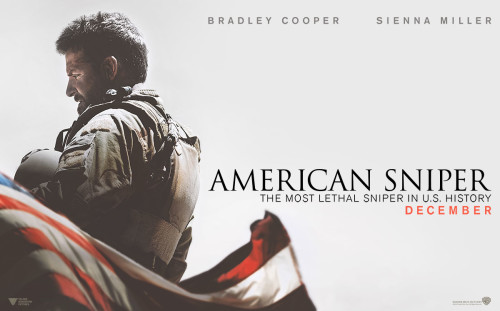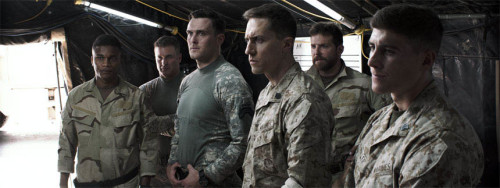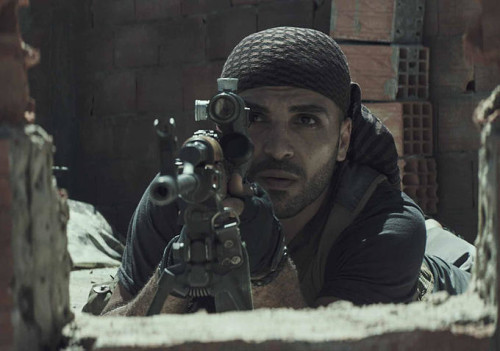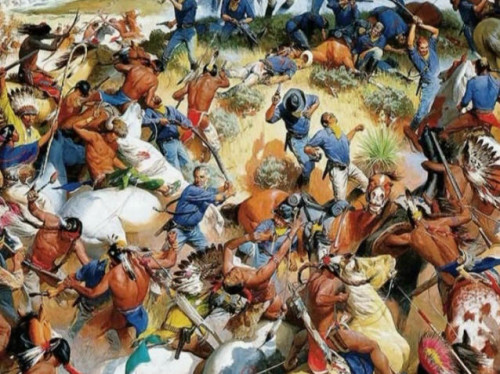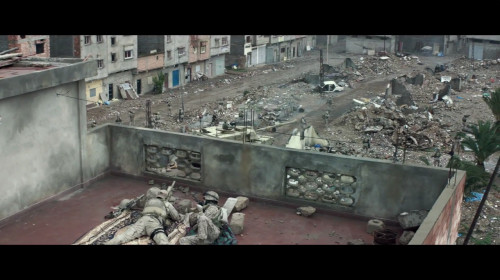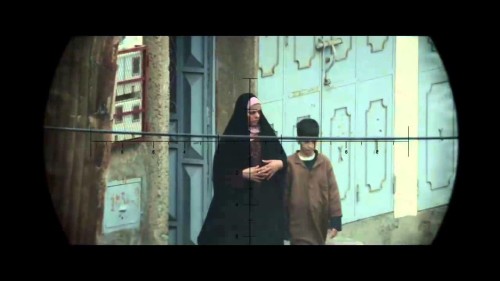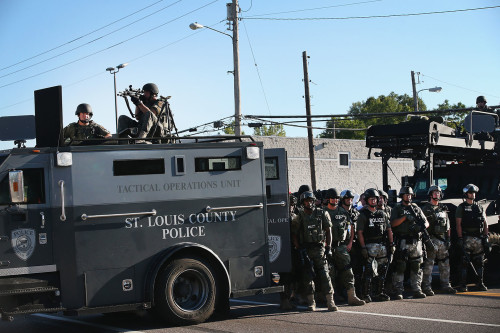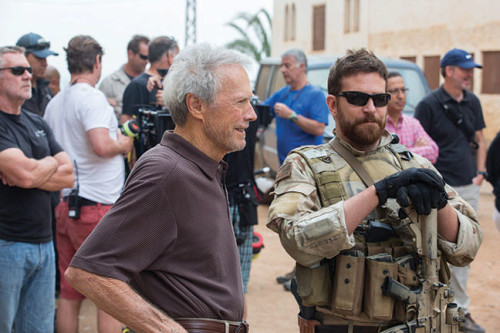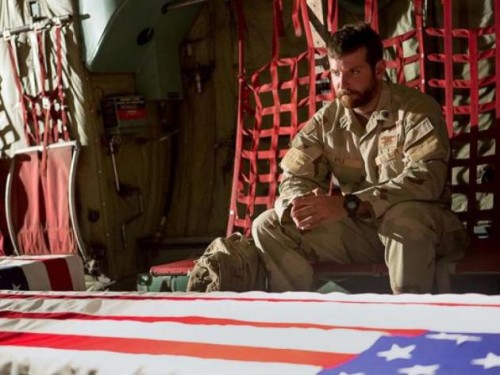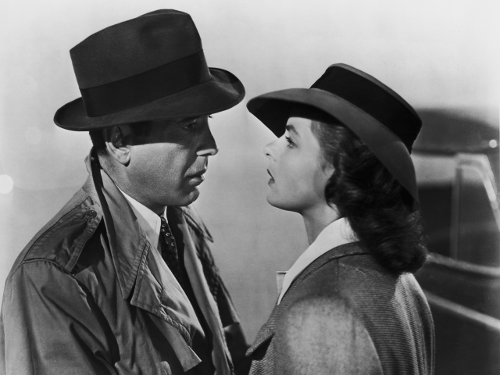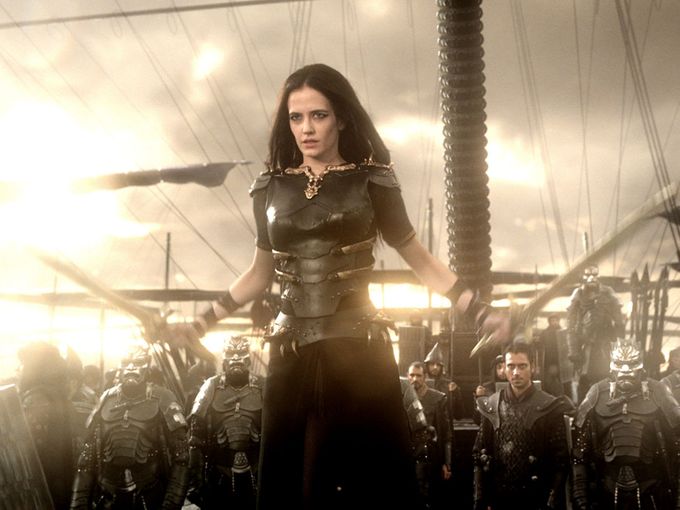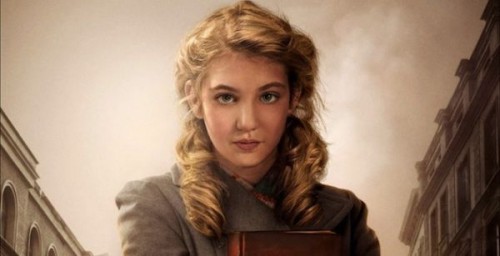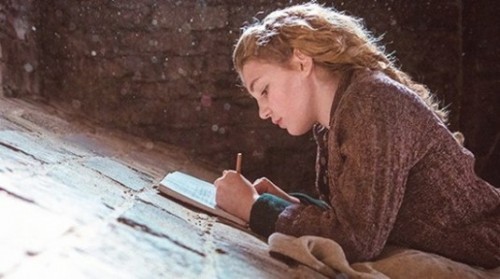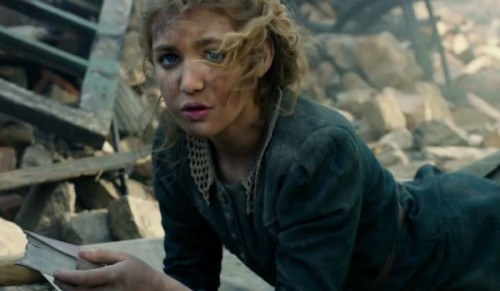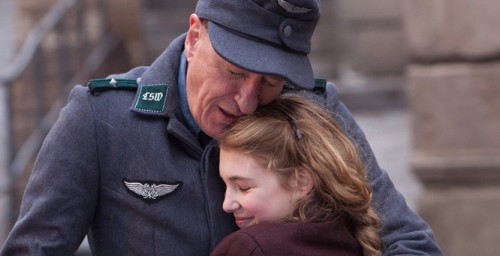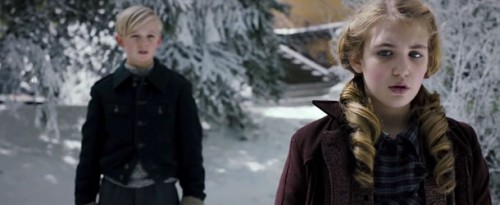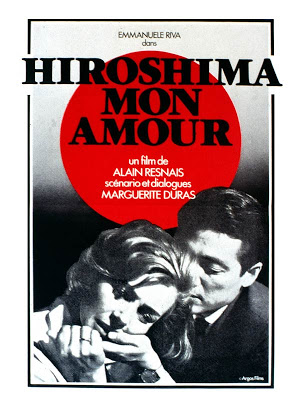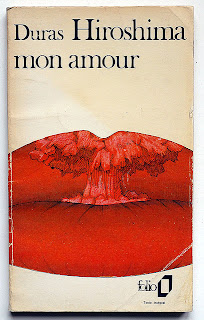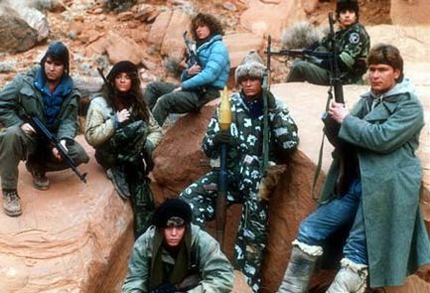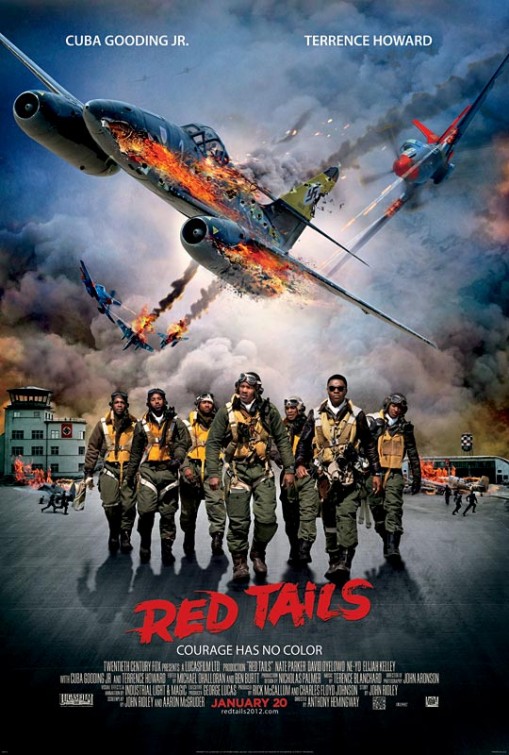This guest post written by Becky Kukla appears as part of our theme week on Women in Horror.
Set in the midst of the Iran-Iraq war in the 1980s, Under the Shadow focuses on the lives of Shideh (Narges Rashidi) and her young daughter Dorsa (Avin Manshadi) living in in a small apartment in the middle of Tehran. Early on, Shideh’s husband, Iraj (Bobby Naderi), is conscripted to the frontline of the fighting, leaving Shideh and Dorsa alone. As the bombing becomes worse, and their own apartment building is struck, both of them begin to experience ghostly apparitions within the apartments, categorized by their neighbors, and by Dorsa, as jinn.
The title, Under the Shadow, refers to both the literal shadow of war that Shideh and Dora live underneath on a daily basis and the ghostly souls which begin to haunt them. With regular bombings being an everyday part of their lives, and a warhead landing in the apartment above them, the two of them live under the “shadow of war” in a very real sense. The spiritual shadows known as jinn — supernatural creatures that exist in Arab folklore and Islamic mythology and theology — lurk in doorways and in the corners of rooms, never existing as more than a ghostly figure in the corner of one’s eye. These shadows descend on Shideh and Dorsa, aggressively destroying their lives.
The jinn in Under the Shadow have a basis in myth and legend. Like ghouls and ghosts, they are fantasy figures that may or may not exist. For most of the film it’s hard to know whether the jinn are really haunting Dorsa and Shideh or whether they are manifestations of their fear concerning their current situation. Dorsa, after being told about the jinn by a young neighbor, claims that they are in the apartment several days before Shideh begins to have any experiences with them. This could be Dorsa’s grief at her father leaving and her fears about being killed — as a child she has even less control of the situation than her mother does. When Dorsa loses her beloved doll, she explains to Shideh that the spirits have taken it. Again, this could easily be attributed to Dorsa’s fear of abandonment and death.
Under the Shadow straddles a very thin line between fantasy and reality. Writer-director Babak Anvari never explicitly reveals whether the haunting of Shideh and Dorsa is real or imagined, which means that the audience is kept in confusing uncertainty as well. Anvari based his debut film on his personal experiences as a child living in Iran during the war, as well as his own childhood fears about “the ancient myth.” Contextualizing the mayhem that Dorsa and Shideh are going through (they are living in a literal war zone) helps the audience to rationalize their heightened states of fear. On the other hand, some of the events that take place cannot be explained away logically, and we (like Dorsa and Shideh) are forced to confront the terrifying thought that not only has their city been invaded, but their home may be too.
The jinn, and the hauntings, also serve as a metaphor for Shideh’s own insecurities about motherhood. In the first scene of Under the Shadow, Shideh is at university in Tehran to find out whether she will be able to return to finish her medical studies. It is revealed that she was part of the Iranian Revolution before the war, and because of her liberal attitudes, the university will not permit her to come back and graduate. She leaves, deflated and angry. Later, in the film Shideh and Iraj have a heated conversation about why Shideh wants to return to her studies, and why she cannot be satisfied with looking after her daughter. Though Dorsa and Shideh get on well for most of the film, there are moments of tension between the two. The film’s themes of motherhood, hauntings, and trauma drew comparisons to The Babadook. Shideh, as someone who used to want to be a doctor and was actively involved in the revolution, is now trapped inside her apartment building. It’s a huge shift for her, and though she doesn’t blame the birth of Dorsa outright, there seems to be some resentment there. This resentment is only worsened when Iraj leaves — he is a doctor and his skills are needed. His departure partly serves as a reminder to Shideh that she is not qualified and due to the changing role of women in Iranian society post-revolution, she may only hold the title of “mother” for the rest of her life.
Shideh is also living at a cultural crossroads. In her apartment, she exercises to Jane Fonda workout tapes, wears Western clothing, and allows her daughter to watch videos. Outside, she must dress conservatively, predominantly in a chador. At one point she reminds Dorsa not to tell the neighbors that they own a video player, as they are banned. Her life is lived in secrecy, under a different type of shadow. These inner conflicts (mother/doctor, traditional/modern) all contribute to Shideh’s frustration and assist in her slow descent into the depths of fear in her current situation.
Ultimately, Shideh feels incapable of doing what it is widely believed that mothers are supposed to do: protect their children. She is unable to protect Dorsa from the war raging in their country just as she is unable to protect her from the spirits raging in their apartment. During the height of their haunting, Shideh receives a phone call from Iraj, who begins to berate her for being a bad mother, telling her that he knew she wouldn’t be able to protect their daughter. Of course, the phone call is attributed to the jinn playing games with Shideh, but they deliberately tap into Shideh’s biggest insecurity.
Real horror is difficult to convey in film; it needs the audience to truly identify with the main characters, to feel their fear as though it is their own. Under the Shadow is a film which bleeds horror from every frame. Not only does it have a strong narrative with an excellent cast, Under the Shadow succeeds in transforming our own self-doubt into horrifying experiences. We identify with Shideh as someone who is struggling, frustrated, and fearful for the future. Whether Shideh’s fears have manifested themselves as a haunted house of horror, or whether the jinn really do exist, is almost irrelevant by the end. All we want is for Shideh and Dorsa to be safe — from both the war and the jinn.
Becky Kukla works in factual TV by day, and by night she writes about representation in film and television, and rants about politics on twitter. You can find her at Femphile or at Film Inquiry.
